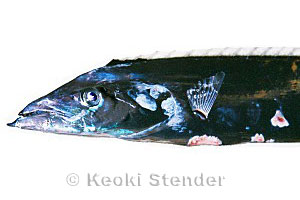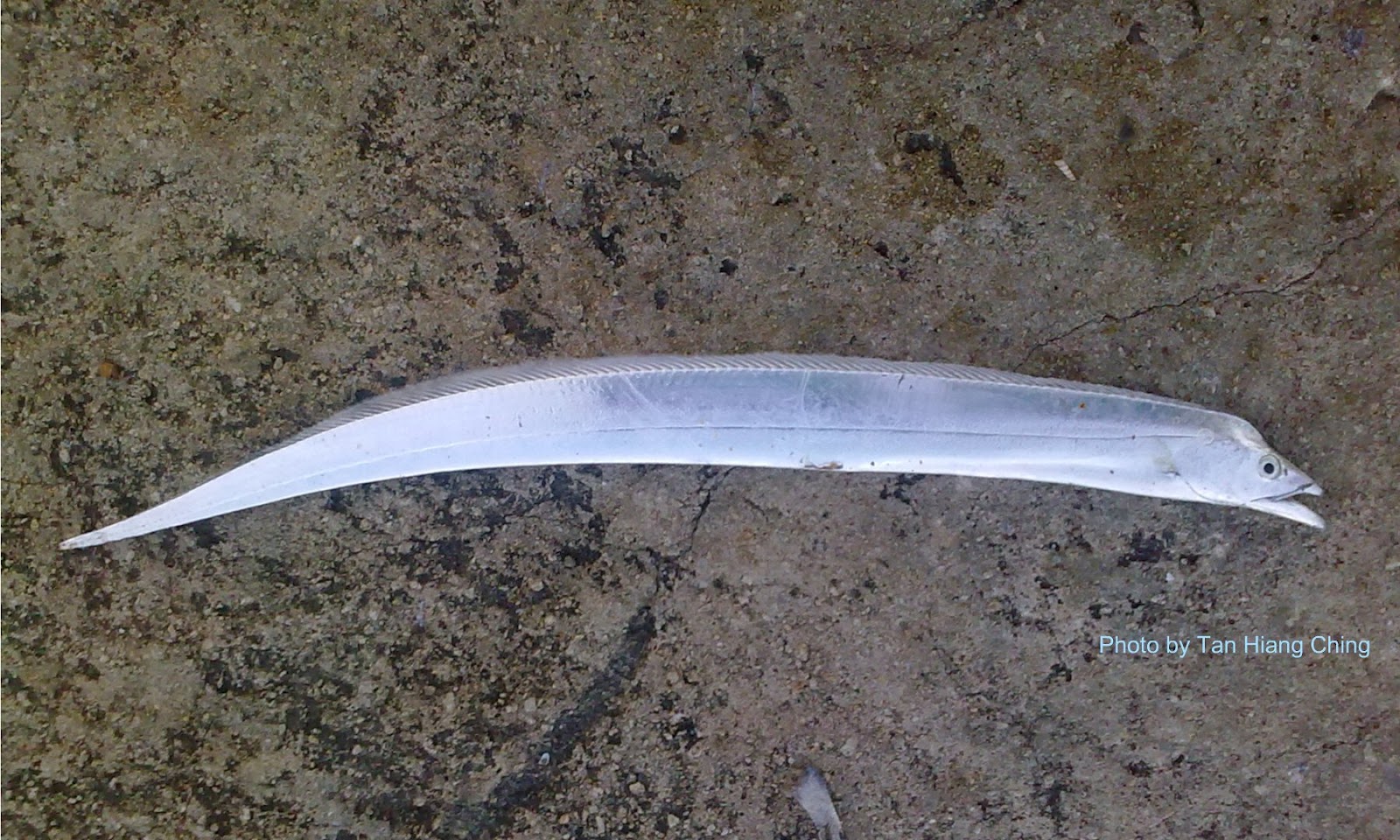Razorback scabbardfish
Note the mere millimeter-sized tail fin!
The Sägedegenfisch ( Assurger anzac ) is a quite rare representatives of the hair tails ( Trichiuridae ). It belongs to the subfamily Lepidopodinae (ie, that their " pelvic fins scaly " are ), in which the caudal fin is reduced either very tiny or completely. The fish is longer, but still stretched and narrower than the black scabbard fish ( which is in the subfamily Aphanopodinae ). Assurger is monotypic.
Features
The fish is 2.5 m long; he is bright silver with blue shimmer. At the anterior end of the dorsal fin membrane there may be a black spot. The body is 25 to 28 times longer than high, but it is very narrow and ribbon-like. The head takes up 7-8% of the total length. The spine consists of elements 125-130. The dorsal fin is very low, consisting in front of several free radiation, ranging from the back of the head to the tapered rear end, to which a millimeter-sized, but still bilobed caudal fin is still available. The anal fin is even lower in the front section. All rays are undivided, but quite soft. The highlighted by the dorsal fin dorsal keel continues on the head to the snout. The mouth is quite small, the lower jaw protrudes slightly in front; both jaws bear on the front end small connective tissue projections and with smaller canines busy ( which are at the front end of the premaxilla larger). The lateral line shows a normal course.
Fins formula: D 116-123, A 76-90. P 10-12. V: rudiment present as a small sting.
Dissemination
Assurger has been demonstrated in a range of continental and island slopes: in the Atlantic Ocean along the Walvis Ridge, in Puerto Rico and in Uruguay; in the Indian Ocean off Western Australia; in the Pacific off New Guinea, southern Japan, the Midway Islands, in Hawaii, in California, in the area of the Nazca Ridge and Sala y Gómez Ridge.
Behavior and meaning
The bright coloring and the (smaller) eyes show that Assurger meso, usually also bathypelagic (up to about 400 m depth ) lives, while the boys epipelagic, so the surface. In the larval and juvenile fish, the V- spines are, as in the Gempylidae and Trichiuridae usual, still long and the high D (Richards 2006). For the " Sägedegen " there is still no relevant live observations. Of course, the very tiny tail suggests the question whether it is " already fully -functional " or not but still a very " sneaky " propulsion (see Aphanopus carbo) is used. Had the fish in food studies small fish (eg anchovies) and squids in the stomach. He is just randomly caught in fishing or in trawls and is considered edible. Due to the general devastation of marine habitats but he also might already be compromised.










